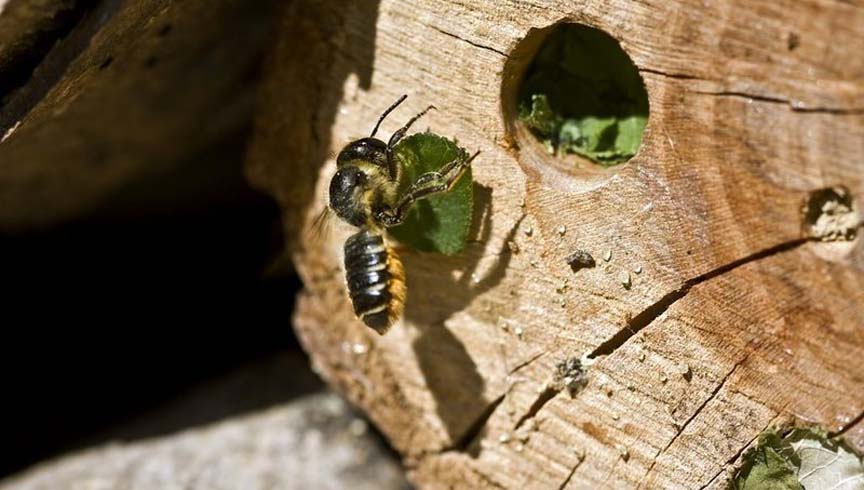What's IotD?
The interesting, amazing, or mind-boggling images of our days.
|
| |
xoxoxoBruce Monday Jun 10 12:21 AM June 10th, 2019: Bee Home
We’ve heard a lot about bees and their decline, role in our food production, but invariably they are talking Western Honey Bees,
you know, the ones with delicious puke. They’re the ones that come to my mind when people start talking about bees, the useless
drones, the thousands of working girls, and Jaba the Queen.
But there are over 16,000 different kinds of bees, very few live in big colonies like the honey bee, some live in small groups and
many of them live solitary lives like the largest bee, the 1.54 inch (39mm) Leafcutter bee.

Quote:
Last Summer, scientists in South America were studying the impact agricultural practices have on the surrounding ecosystems, and specifically how natural areas and fields are pollinated as a result of their proximity to one another. In the midst of this analysis in San Juan, Argentina, the team of researchers made a totally unexpected discovery: a bee’s nest made completely from plastic.
San Juan is a region with a desert climate abutting the Andes that is nonetheless known for wine production, among other crops. Most growing operations there are family run, which provides a lot of data for those studying the relationships between human activity and nature. In this case, that means human-made materials finding their way into an unexpected place.
|

Quote:
|
“The nest was found in a chicory field for seed production in San Juan, Argentina,” says Mariana Laura Allasino of the National Agricultural Technology Institute, who coauthored a report on the find in the journal Apidologie. The nest belonged to a bee from the family Megachilidae, which are solitary bees that often build nest cells from material they collect, such as soil, bits of leaves, and even animal fur. In this case, the nest cells were made of “light blue plastic, of shopping bag consistency,” and “white plastic, thicker than the previous one,” Allasino says.
|

Quote:
|
“Due to our activities, human beings are contributing to the ecosystem’s degradation and biodiversity loss,” says Allasino, via email. “The most fascinating thing about this finding is that it suggests the adaptive flexibility that certain bee species would have in the face of changes in environmental conditions.” It’s almost a positive message. While we can’t tell yet if the plastic was harming the bee or its ability to reproduce, she says, it is a demonstration of just how adaptable nature can be.
|
Wait a god damned minute bitch, I think it’s a little too early to be celebrating...
Quote:
|
The researchers in Argentina plan to analyze DNA from the dead larvae found in the plastic nest to confirm the exact species. (It’s not known whether the nest material had anything to do with the fate of the larvae.)
|
Finding a house full of dead children is not reason to celebrate just yet.
link
Gravdigr Monday Jun 10 12:35 PMOn the upside for the bees...
Making their homes outta plastic means they only need to rebuild every 500 years, or so.
Your reply here?
The Cellar Image of the Day is just a section of a larger web community: a bunch of interesting folks talking about everything. Add your two cents to IotD by joining the Cellar.
|
|
|
|
|
|




